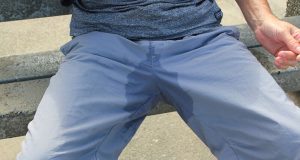Submitted by Dr. George Traitses
With significant differences in manufacturing practices and the fact that they have only been on the market for a short period of time, little is known about the impact of e-cigarettes on health.
A report from the American Medical Association had this to say:
“Because E-cigarettes have not been thoroughly tested, one cannot conclude that they do not produce any harmful products, even if they produce fewer dangerous substances than conventional cigarettes. In fact, analysis of two brands of e-cigarettes found detectable levels of known carcinogens and toxic chemicals (i.e., diethylene glycol, an ingredient used in antifreeze, small amounts of tobacco-specific nitrosamines, and certain other tobacco-specific impurities that may be harmful).
To date, most research on e-cigarette ingredients, safety, health effects, and use by current smokers has been funded by manufacturers.”
Consumers will want to steer clear of e-cigarettes until manufacturing standards are established and there is sufficient data to better understand the potential health risks.
Nearly five years after Congress gave the FDA authority to regulate various tobacco products, the electronic cigarette industry, a multibillion-dollar, rapidly growing business, is finally coming under regulatory scrutiny. Until this Thursday’s FDA announcement, the products were not FDA-monitored, but some fear it’s too little too late. The new proposed rules would give the feds oversight on e-cigarettes, along with cigars, pipe tobacco and other products. While e-cigarettes are currently advertised on television (traditional cigarette advertising has been banned from T.V. since 1971), that may change. According to the New York Times, regulation of advertising plus the question of whether to ban kid-friendly flavours like grape and bubble gum are among the trickiest issues for lawmakers to navigate – but for now, grappling with these issues has been put off as the science that guides such rules is still in the works.
Mitchell Zeller, the director of the F.D.A.’s Center for Tobacco Products, defended his agency when asked about regulator delays. “We’re not being coy,” he said. “When the way to make policy is through rule making, there has to be a sufficient regulatory science base to support it.”
Writes Sabrina Tavernise and Barry Meier in The New York Times, “One crucial question is how arduous the process will be for e-cigarette companies to get the F.D.A.’s approval for making claims that they are less dangerous than ordinary cigarettes. Companies had been in legal limbo because, until Thursday, the agency did not legally have jurisdiction over them.”
Some say whatever happens, it’s not happening fast enough to keep up with the pace of industry growth.
Source: “For E-Cigarettes, the Regulatory Battle Now Begins,” by Sabrina Tavernise and Barry Meier, The New York Times, April 24, 2014.
For more information on health and safety visit the Ontario Chiropractic Association, a voluntary professional association whose mission is to serve our members and the public by advancing the understanding and use of chiropractic care. For more information visit: www.chiropractic.on.ca or call: 1-877-327-2273. Dr. George Traitses can be reached at 416-499-5656 or visit www.infinite-health.com.
 Pride News Canada's Leader In African Canadian & Caribbean News, Views & Lifestyle
Pride News Canada's Leader In African Canadian & Caribbean News, Views & Lifestyle





